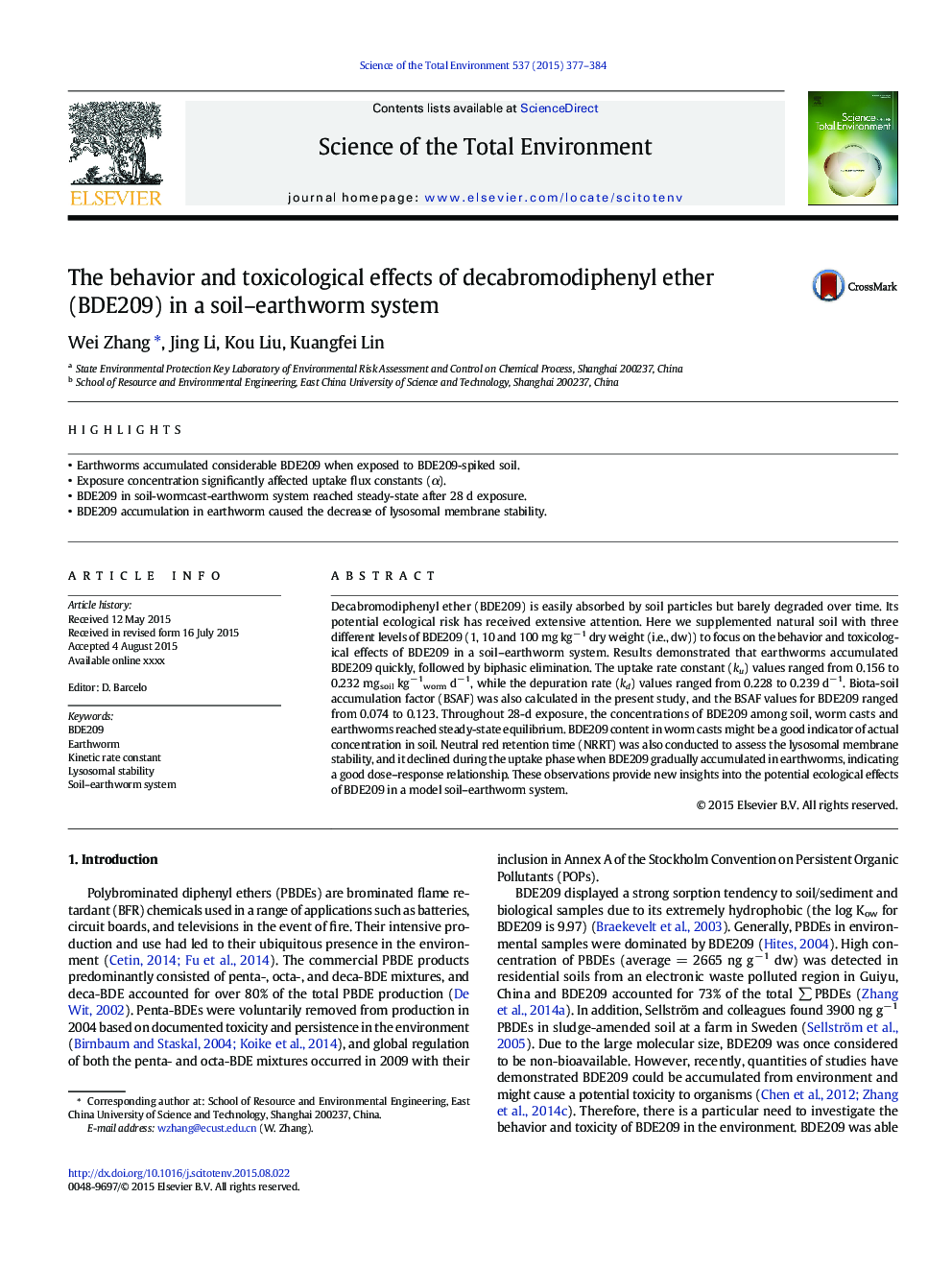| Article ID | Journal | Published Year | Pages | File Type |
|---|---|---|---|---|
| 6325519 | Science of The Total Environment | 2015 | 8 Pages |
Abstract
Decabromodiphenyl ether (BDE209) is easily absorbed by soil particles but barely degraded over time. Its potential ecological risk has received extensive attention. Here we supplemented natural soil with three different levels of BDE209 (1, 10 and 100 mg kgâ 1 dry weight (i.e., dw)) to focus on the behavior and toxicological effects of BDE209 in a soil-earthworm system. Results demonstrated that earthworms accumulated BDE209 quickly, followed by biphasic elimination. The uptake rate constant (ku) values ranged from 0.156 to 0.232 mgsoil kgâ 1worm dâ 1, while the depuration rate (kd) values ranged from 0.228 to 0.239 dâ 1. Biota-soil accumulation factor (BSAF) was also calculated in the present study, and the BSAF values for BDE209 ranged from 0.074 to 0.123. Throughout 28-d exposure, the concentrations of BDE209 among soil, worm casts and earthworms reached steady-state equilibrium. BDE209 content in worm casts might be a good indicator of actual concentration in soil. Neutral red retention time (NRRT) was also conducted to assess the lysosomal membrane stability, and it declined during the uptake phase when BDE209 gradually accumulated in earthworms, indicating a good dose-response relationship. These observations provide new insights into the potential ecological effects of BDE209 in a model soil-earthworm system.
Related Topics
Life Sciences
Environmental Science
Environmental Chemistry
Authors
Wei Zhang, Jing Li, Kou Liu, Kuangfei Lin,
